-
 Bitcoin
Bitcoin $119000
0.17% -
 Ethereum
Ethereum $3664
-2.12% -
 XRP
XRP $3.229
-7.77% -
 Tether USDt
Tether USDt $1.001
0.02% -
 BNB
BNB $783.2
-1.48% -
 Solana
Solana $191.3
-5.26% -
 USDC
USDC $1.000
0.03% -
 Dogecoin
Dogecoin $0.2450
-7.74% -
 TRON
TRON $0.3115
-1.61% -
 Cardano
Cardano $0.8229
-6.80% -
 Hyperliquid
Hyperliquid $44.17
-2.93% -
 Stellar
Stellar $0.4343
-7.23% -
 Sui
Sui $3.792
-4.09% -
 Chainlink
Chainlink $18.38
-5.73% -
 Hedera
Hedera $0.2491
-7.79% -
 Bitcoin Cash
Bitcoin Cash $518.1
-1.51% -
 Avalanche
Avalanche $24.13
-5.84% -
 Litecoin
Litecoin $113.9
-5.41% -
 UNUS SED LEO
UNUS SED LEO $8.974
-0.21% -
 Shiba Inu
Shiba Inu $0.00001400
-7.98% -
 Toncoin
Toncoin $3.215
-2.09% -
 Ethena USDe
Ethena USDe $1.001
0.03% -
 Polkadot
Polkadot $4.178
-6.84% -
 Uniswap
Uniswap $10.38
-3.05% -
 Monero
Monero $317.8
-1.85% -
 Bitget Token
Bitget Token $4.733
-1.94% -
 Pepe
Pepe $0.00001293
-8.20% -
 Dai
Dai $1.000
0.02% -
 Aave
Aave $292.8
-4.74% -
 Bittensor
Bittensor $430.1
-3.67%
How to use William indicator and Bollinger Bands together?
Use William %R and Bollinger Bands together to identify overbought/oversold conditions and confirm breakouts for strategic crypto trading decisions.
May 28, 2025 at 10:35 pm
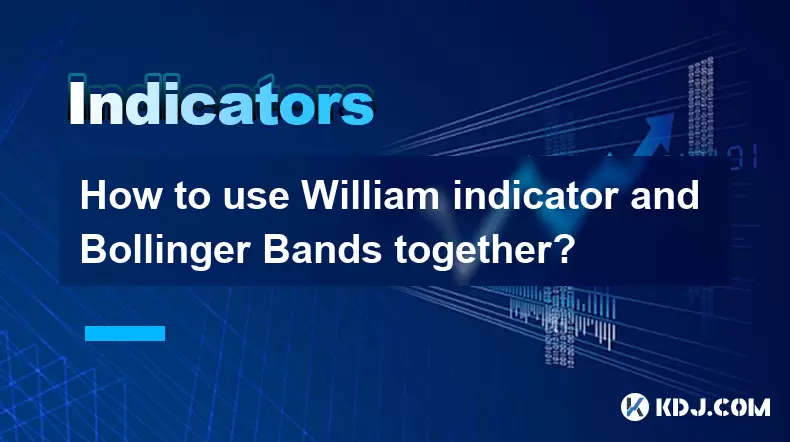
How to Use the William Indicator and Bollinger Bands Together?
The cryptocurrency market is known for its volatility and unpredictability. To navigate this complex landscape, traders often rely on technical analysis tools to make informed decisions. Two popular tools among crypto traders are the William Indicator and Bollinger Bands. When used together, these indicators can provide a powerful framework for understanding market trends and making strategic trading decisions. This article will explore how to effectively use the William Indicator and Bollinger Bands in tandem to enhance your trading strategy.
h3 Understanding the William Indicator
The William Indicator, also known as the William %R, is a momentum indicator that measures the level of the close relative to the high-low range over a given period, typically 14 days. It is used to identify overbought and oversold conditions in the market. The William %R oscillates between 0 and -100, with readings above -20 indicating overbought conditions and readings below -80 indicating oversold conditions.
To use the William Indicator effectively, you need to understand its basic principles:
- Overbought Conditions: When the William %R crosses above -20, it suggests that the asset may be overbought and could be due for a price correction.
- Oversold Conditions: When the William %R crosses below -80, it suggests that the asset may be oversold and could be due for a price rebound.
h3 Understanding Bollinger Bands
Bollinger Bands are a volatility indicator developed by John Bollinger. They consist of three lines: a middle band (usually a 20-day simple moving average), an upper band (the middle band plus two standard deviations), and a lower band (the middle band minus two standard deviations). Bollinger Bands help traders identify potential price breakouts and trend reversals.
The key concepts to grasp when using Bollinger Bands are:
- Price Touching the Upper Band: This often indicates that the asset is overbought and may be due for a pullback.
- Price Touching the Lower Band: This often indicates that the asset is oversold and may be due for a price increase.
- Squeezing of Bands: When the bands come closer together, it suggests that the market is consolidating and a significant price move may be imminent.
h3 Combining William Indicator and Bollinger Bands
When you combine the William Indicator with Bollinger Bands, you create a more robust trading strategy that can help you identify high-probability trading opportunities. Here's how you can use these indicators together:
- Identifying Overbought and Oversold Conditions: Use the William %R to identify when an asset is overbought or oversold. Confirm these signals by checking if the price is touching the upper or lower Bollinger Band.
- Confirming Breakouts: When the price breaks out of the Bollinger Bands, use the William %R to confirm the strength of the breakout. For example, if the price breaks above the upper band and the William %R is still above -20, it suggests a strong bullish breakout.
- Timing Entries and Exits: Use the William %R to time your entries and exits. For instance, if the price touches the lower Bollinger Band and the William %R is below -80, it could be a good time to enter a long position. Conversely, if the price touches the upper Bollinger Band and the William %R is above -20, it could be a good time to exit a long position or enter a short position.
h3 Practical Example of Using William Indicator and Bollinger Bands Together
Let's walk through a practical example of how to use these indicators together in a trading scenario:
- Step 1: Open your trading platform and select the cryptocurrency pair you wish to analyze.
- Step 2: Add the William %R indicator to your chart with a period setting of 14.
- Step 3: Add the Bollinger Bands indicator to your chart with a period setting of 20 and a standard deviation of 2.
- Step 4: Monitor the William %R for overbought and oversold signals. If the William %R crosses above -20, it suggests overbought conditions. If it crosses below -80, it suggests oversold conditions.
- Step 5: Check if the price is touching the upper or lower Bollinger Band to confirm the William %R signals. If the price touches the upper band and the William %R is above -20, it confirms overbought conditions. If the price touches the lower band and the William %R is below -80, it confirms oversold conditions.
- Step 6: Use these confirmed signals to make trading decisions. For example, if the price touches the lower Bollinger Band and the William %R is below -80, consider entering a long position. If the price touches the upper Bollinger Band and the William %R is above -20, consider exiting a long position or entering a short position.
h3 Adjusting Settings for Different Cryptocurrencies
Different cryptocurrencies can exhibit varying levels of volatility and market behavior. Therefore, it's important to adjust the settings of the William Indicator and Bollinger Bands to suit the specific cryptocurrency you are trading. Here are some tips for adjusting these settings:
- Bitcoin (BTC): Given its relatively high liquidity and stability compared to other cryptocurrencies, you might use the standard settings for both indicators (14 for William %R and 20 for Bollinger Bands with a standard deviation of 2).
- Altcoins: For more volatile altcoins, you might want to adjust the Bollinger Bands to a shorter period (e.g., 10 days) to capture more frequent price movements. Similarly, you could use a shorter period for the William %R (e.g., 9 days) to get more timely signals.
- Stablecoins: For stablecoins, which tend to have lower volatility, you might extend the period settings to capture longer-term trends (e.g., 21 days for Bollinger Bands and 20 days for William %R).
h3 Common Pitfalls and How to Avoid Them
While combining the William Indicator and Bollinger Bands can be effective, there are common pitfalls that traders should be aware of and avoid:
- Overreliance on Indicators: Don't rely solely on these indicators for making trading decisions. Always consider other factors such as market news, overall trends, and your risk management strategy.
- Ignoring Divergence: Pay attention to divergence between the price and the indicators. If the price is making new highs but the William %R is not, it could signal a potential reversal.
- False Signals: Both indicators can generate false signals, especially in highly volatile markets. Use other technical analysis tools to confirm signals before making a trade.
- Improper Settings: Using the wrong settings for different cryptocurrencies can lead to inaccurate signals. Always adjust the settings based on the specific cryptocurrency you are trading.
Frequently Asked Questions
Q1: Can the William Indicator and Bollinger Bands be used for short-term trading?
Yes, both the William Indicator and Bollinger Bands can be effective for short-term trading. By using shorter periods for both indicators (e.g., 9 days for William %R and 10 days for Bollinger Bands), you can capture more frequent price movements and make quicker trading decisions.
Q2: How do I know if the signals from these indicators are reliable?
To determine the reliability of signals, you should look for confirmation from multiple sources. For example, if the William %R indicates an oversold condition and the price is touching the lower Bollinger Band, you can look at other indicators like the Relative Strength Index (RSI) or Moving Average Convergence Divergence (MACD) to confirm the signal. Additionally, always consider the broader market context and news events that might affect the cryptocurrency's price.
Q3: Can these indicators be used for all types of cryptocurrencies?
While the William Indicator and Bollinger Bands can be applied to all types of cryptocurrencies, their effectiveness may vary depending on the specific cryptocurrency's volatility and market behavior. For highly volatile altcoins, you might need to adjust the settings to shorter periods to capture more rapid price movements. For more stable cryptocurrencies like Bitcoin, standard settings may be more effective.
Q4: How often should I check these indicators for trading signals?
The frequency of checking these indicators depends on your trading style. For day traders, checking the indicators every few hours or even more frequently can be beneficial. For swing traders, checking the indicators once or twice a day might be sufficient. Always align your indicator checks with your overall trading strategy and risk management plan.
Disclaimer:info@kdj.com
The information provided is not trading advice. kdj.com does not assume any responsibility for any investments made based on the information provided in this article. Cryptocurrencies are highly volatile and it is highly recommended that you invest with caution after thorough research!
If you believe that the content used on this website infringes your copyright, please contact us immediately (info@kdj.com) and we will delete it promptly.
- Bitcoin, VIX Correlation, and Institutional Adoption: A New Era for Crypto?
- 2025-07-24 16:30:12
- Tyre Legalities, the 20p Test, and What Motoring Experts Want You to Know
- 2025-07-24 16:50:13
- Pi Coin's Ecosystem Evolves: New Listings and Community Speculation
- 2025-07-24 16:50:13
- Starknet (STRK): Navigating the Investment Landscape in the Layer-2 Arena
- 2025-07-24 16:30:13
- Bored Ape Brouhaha: Yuga Labs' $9M Judgment Overturned!
- 2025-07-24 15:50:12
- BlackRock, Ethereum, and the Altcoin Rally: What's Driving the Crypto Surge?
- 2025-07-24 15:10:13
Related knowledge
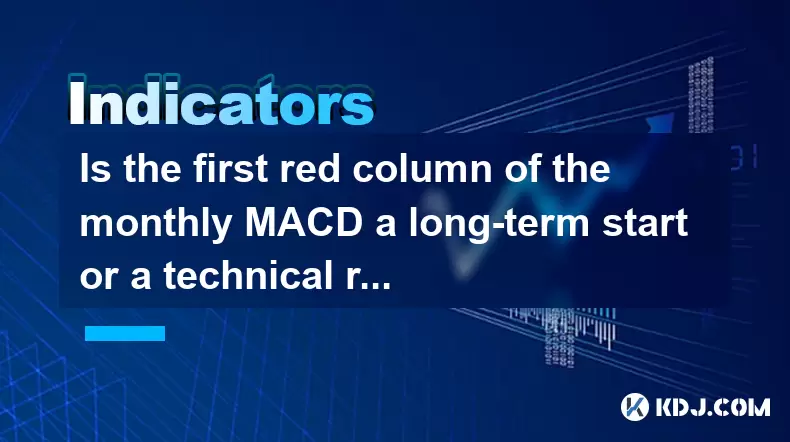
Is the first red column of the monthly MACD a long-term start or a technical rebound?
Jul 24,2025 at 03:14pm
Understanding the Monthly MACD and Its SignificanceThe Monthly MACD (Moving Average Convergence Divergence) is a momentum indicator used to identify l...
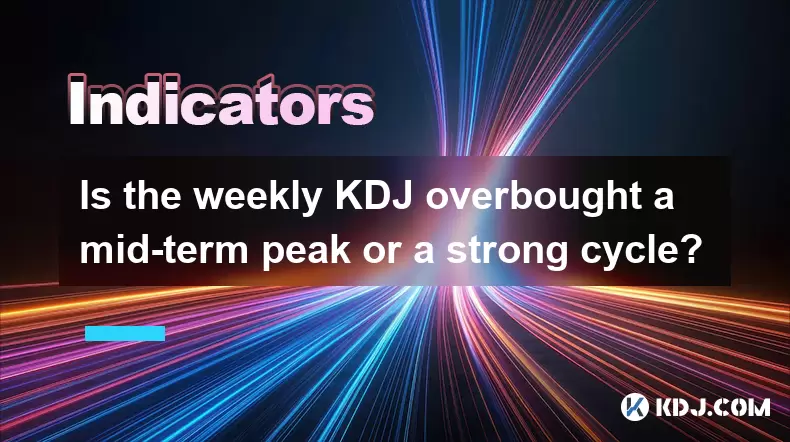
Is the weekly KDJ overbought a mid-term peak or a strong cycle?
Jul 24,2025 at 05:15pm
Understanding the Weekly KDJ Indicator in Cryptocurrency TradingThe KDJ indicator is a momentum oscillator derived from the Stochastic Oscillator, wid...
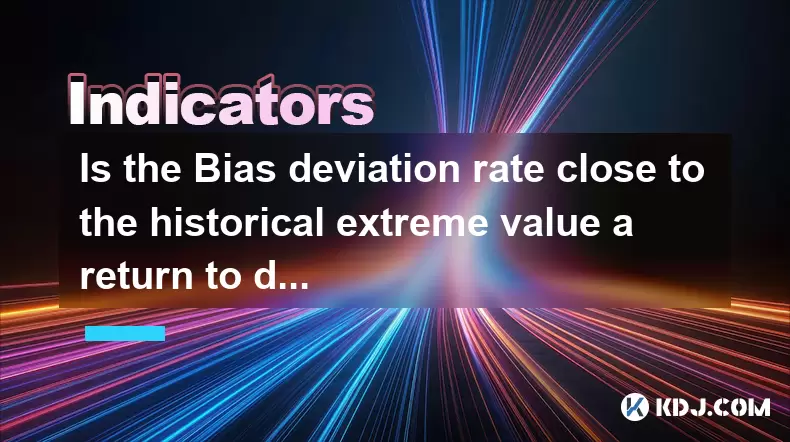
Is the Bias deviation rate close to the historical extreme value a return to demand or a strengthening trend?
Jul 24,2025 at 04:49pm
Understanding the Bias Deviation Rate in Cryptocurrency MarketsThe Bias deviation rate is a technical indicator used in cryptocurrency trading to meas...
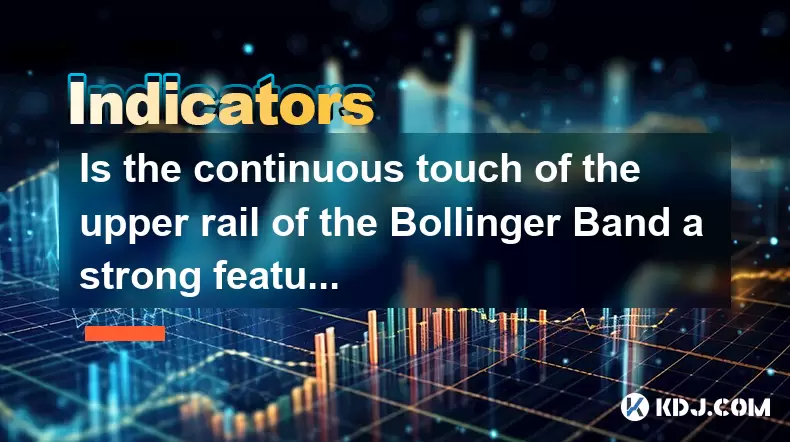
Is the continuous touch of the upper rail of the Bollinger Band a strong feature or an overbought risk?
Jul 24,2025 at 12:22pm
Understanding the Bollinger Band StructureThe Bollinger Band is a widely used technical analysis tool in the cryptocurrency market, designed to measur...
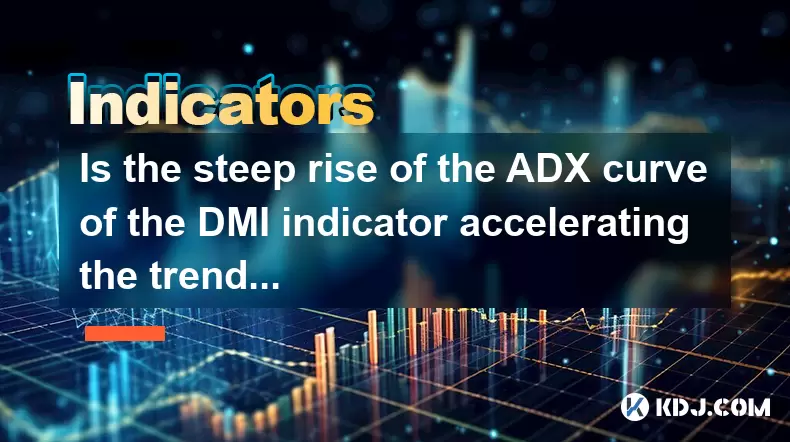
Is the steep rise of the ADX curve of the DMI indicator accelerating the trend or about to reverse?
Jul 24,2025 at 11:15am
Understanding the DMI Indicator and Its ComponentsThe Directional Movement Index (DMI) is a technical analysis tool used to identify the presence and ...
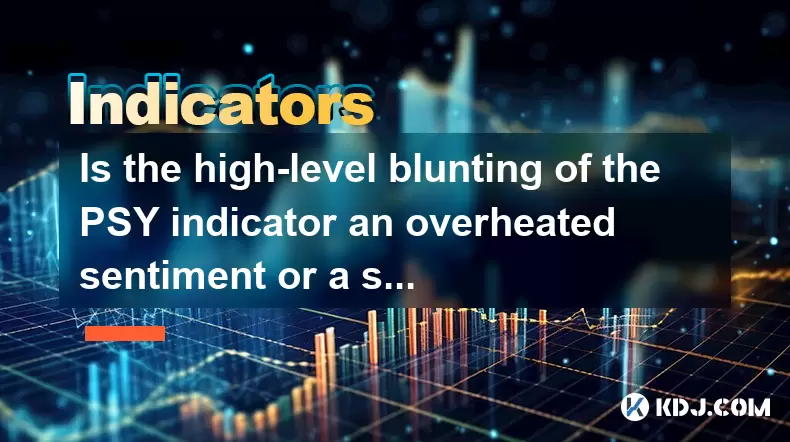
Is the high-level blunting of the PSY indicator an overheated sentiment or a strong feature?
Jul 24,2025 at 04:21pm
Understanding the PSY Indicator in Cryptocurrency TradingThe PSY (Psychological Line) indicator is a sentiment-based oscillator widely used in cryptoc...

Is the first red column of the monthly MACD a long-term start or a technical rebound?
Jul 24,2025 at 03:14pm
Understanding the Monthly MACD and Its SignificanceThe Monthly MACD (Moving Average Convergence Divergence) is a momentum indicator used to identify l...

Is the weekly KDJ overbought a mid-term peak or a strong cycle?
Jul 24,2025 at 05:15pm
Understanding the Weekly KDJ Indicator in Cryptocurrency TradingThe KDJ indicator is a momentum oscillator derived from the Stochastic Oscillator, wid...

Is the Bias deviation rate close to the historical extreme value a return to demand or a strengthening trend?
Jul 24,2025 at 04:49pm
Understanding the Bias Deviation Rate in Cryptocurrency MarketsThe Bias deviation rate is a technical indicator used in cryptocurrency trading to meas...

Is the continuous touch of the upper rail of the Bollinger Band a strong feature or an overbought risk?
Jul 24,2025 at 12:22pm
Understanding the Bollinger Band StructureThe Bollinger Band is a widely used technical analysis tool in the cryptocurrency market, designed to measur...

Is the steep rise of the ADX curve of the DMI indicator accelerating the trend or about to reverse?
Jul 24,2025 at 11:15am
Understanding the DMI Indicator and Its ComponentsThe Directional Movement Index (DMI) is a technical analysis tool used to identify the presence and ...

Is the high-level blunting of the PSY indicator an overheated sentiment or a strong feature?
Jul 24,2025 at 04:21pm
Understanding the PSY Indicator in Cryptocurrency TradingThe PSY (Psychological Line) indicator is a sentiment-based oscillator widely used in cryptoc...
See all articles

























































































